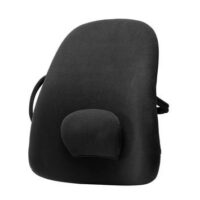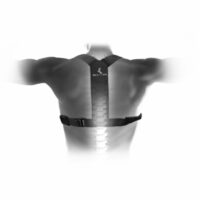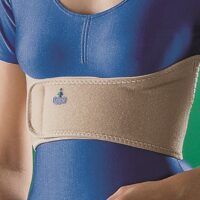Thoracic Pain
Article by John Miller

Thoracic Pain
Upper Back & Rib Pain
Upper back pain (or thoracic pain) is one of the most common injuries in modern society. Injuries can vary from simple to complex. They can also result from posture or fatigue strain injuries, lifting injuries, falls, or even arm use, e.g. throwing injury.
The following links provide upper back pain and thoracic spine injury information plus guidance. Please consult your spinal health practitioner or doctor for specific advice on your upper back pain.

Related Articles
- Thoracic Facet Joint Pain: Offers an understanding of how facet joint issues contribute to upper back discomfort.
- Thoracic Outlet Syndrome: Explains the condition, symptoms, and treatment options for this syndrome affecting the nerves and blood vessels in the upper back and neck area.
- Common Causes of Upper Back Pain: Provides physiotherapy-based insights on managing upper back pain, including common causes and treatments.
- Rib Stress Fracture: Discusses how a rib stress fracture can contribute to upper back pain and outlines treatment strategies.
- Posture Correction: Highlights the importance of posture in preventing and managing upper back pain, offering tips for improvement.
- Osteoporosis: Examines the link between osteoporosis and upper back pain, along with prevention and management strategies.
- Posture Exercises: Suggests exercises to improve posture and alleviate upper back pain.
- Scheuermann’s Disease: Provides information on Scheuermann’s Disease, a condition affecting the spine that can cause upper back pain.
- Scoliosis: Offers insights into how scoliosis can impact upper back pain and suggests treatment options.
- Ankylosing Spondylitis, Fibromyalgia, and Rheumatoid Arthritis: These articles discuss systemic diseases that can cause upper back pain and their management strategies.
Thoracic Spine Red Flags
While most upper back pain is relatively straightforward from a diagnostic perspective and responds quickly to treatment, other potential sources of the thoracic cage and chest pain can be more sinister and require urgent intervention.
Cardiac conditions and malignancy are potentially life-changing sources of upper back pain that you should investigate and treat without delay. Due to the thoracic spine being more likely to be caused by a serious pathology compared to your neck or lower back, it is also wise to consult your trusted healthcare practitioner. You should consult your healthcare practitioner if you have any of the following red flags.
Red Flags
Red flags for possible serious spinal pathology include:
- History of cancer, drug abuse, HIV, immunosuppression or prolonged use of corticosteroids.
- Fever, chills, unexplained weight loss, or recent bacterial infection.
- Pain that is:
- Constant, severe and progressive.
- Non-mechanical without relief from bed rest or postural modification.
- Unchanged despite treatment for 2-4 weeks.
- Accompanied by severe morning stiffness (rheumatoid arthritis and ankylosing spondylitis).
- Recent violent trauma (such as a vehicle accident or a fall from a height) or a spine structure deformity.
- Minor trauma, or even just strenuous lifting, in people with osteoporosis.
- New back pain with age at onset < 20 or > 50 years of age.
- Severe or progressive neurological deficits (muscle weakness, sensation/reflexes) in the lower extremities.
If you feel that you have any of the above symptoms, we recommend an urgent medical assessment.



































































